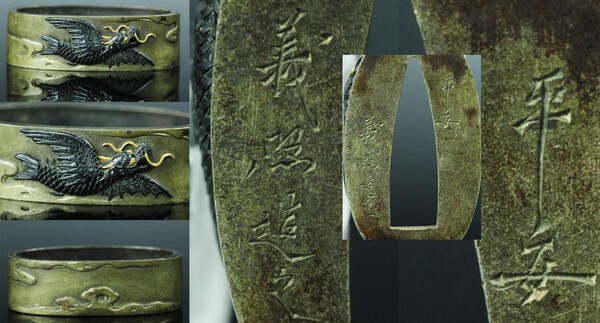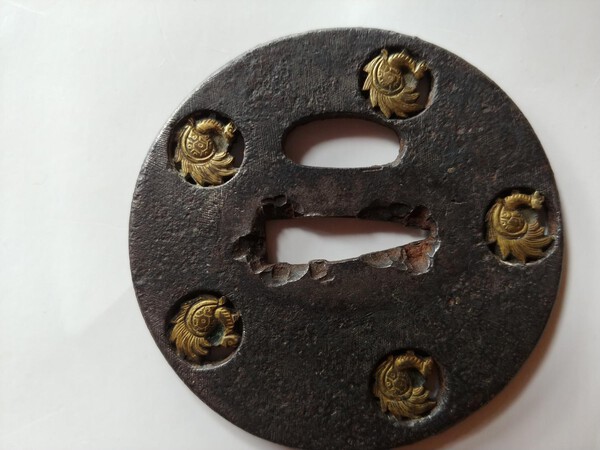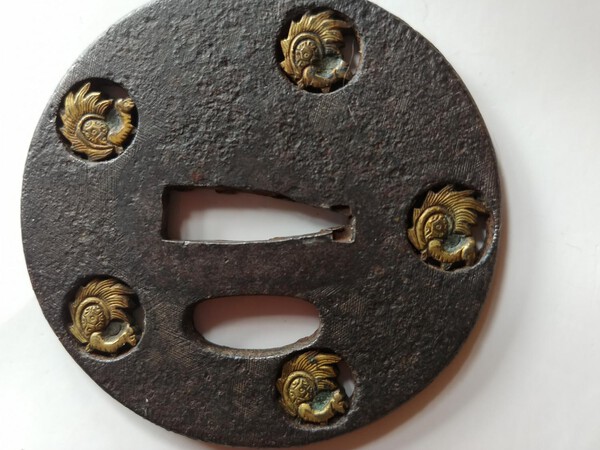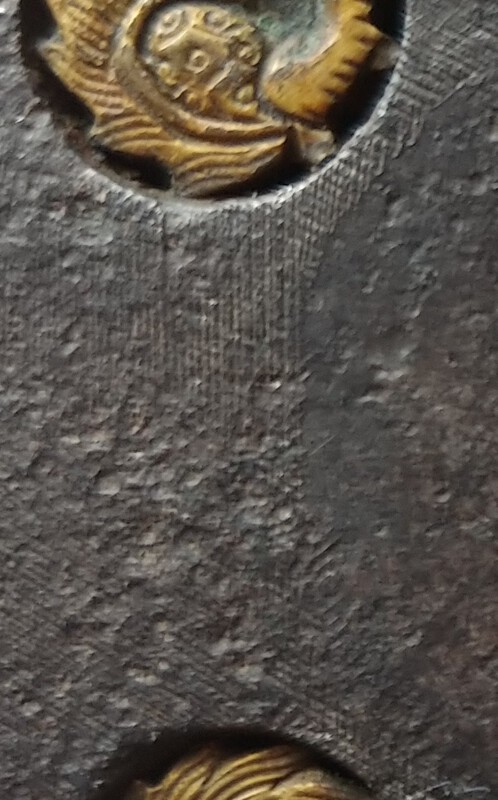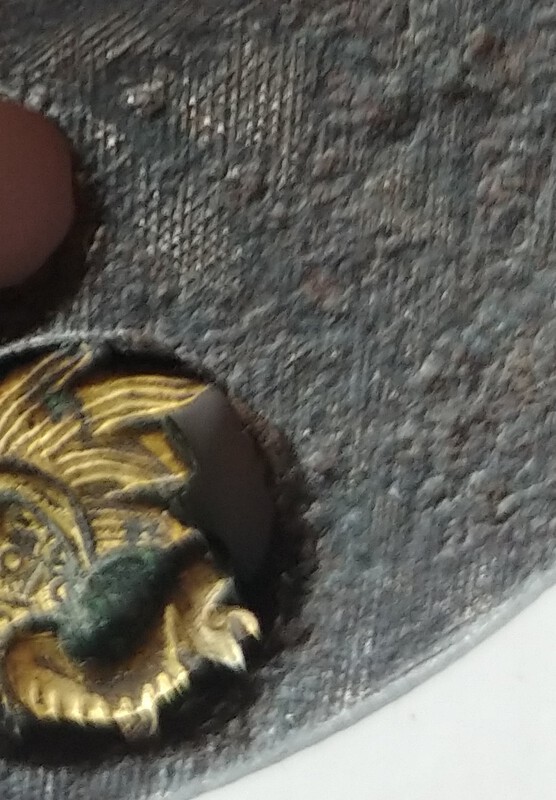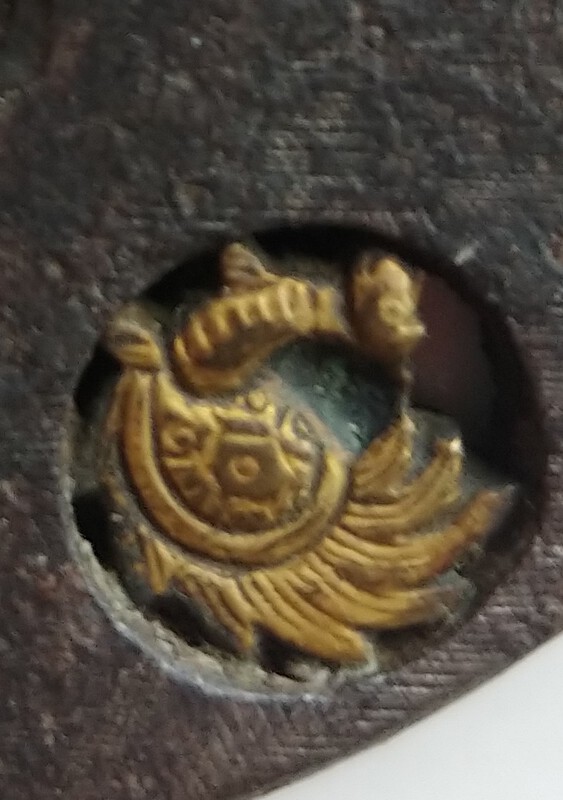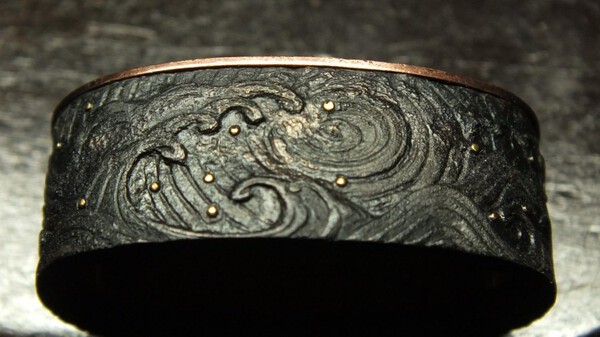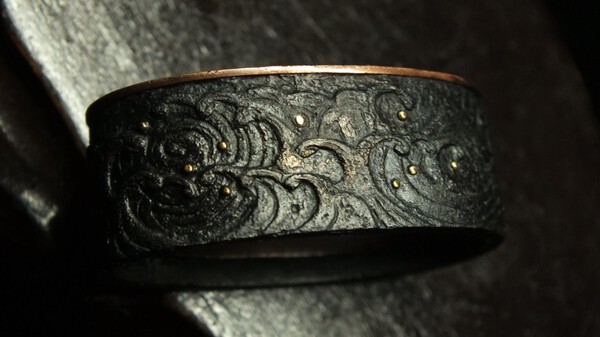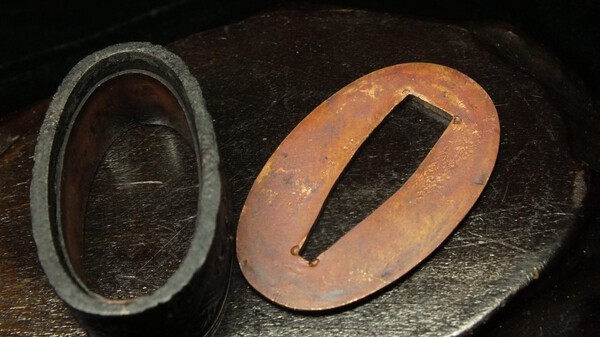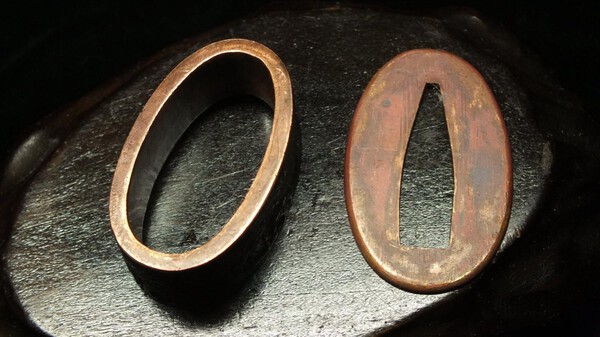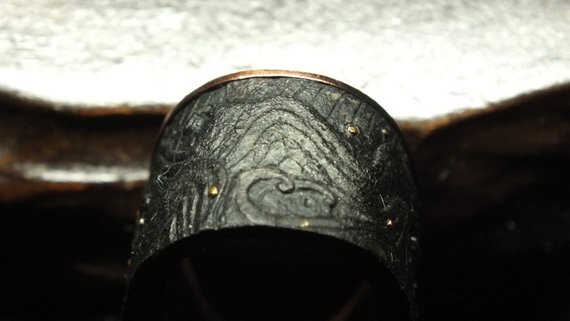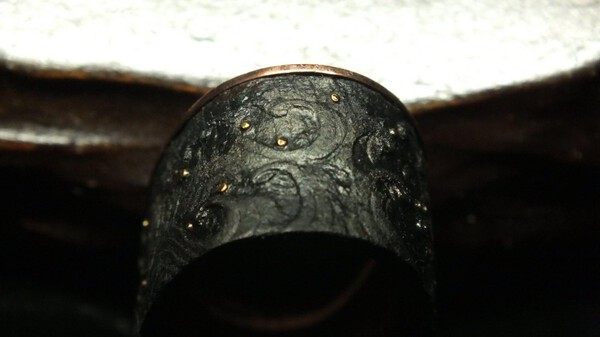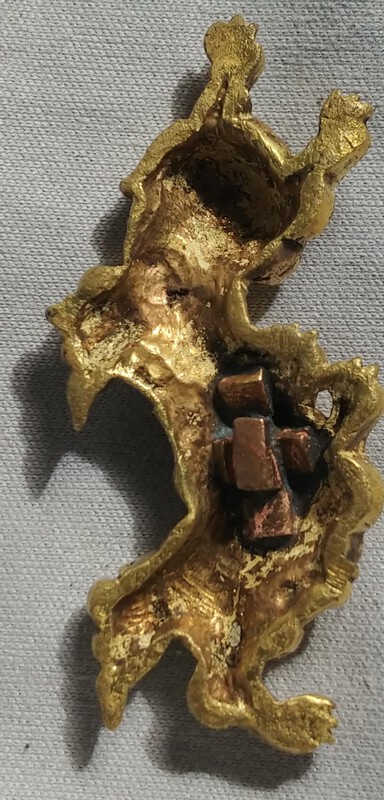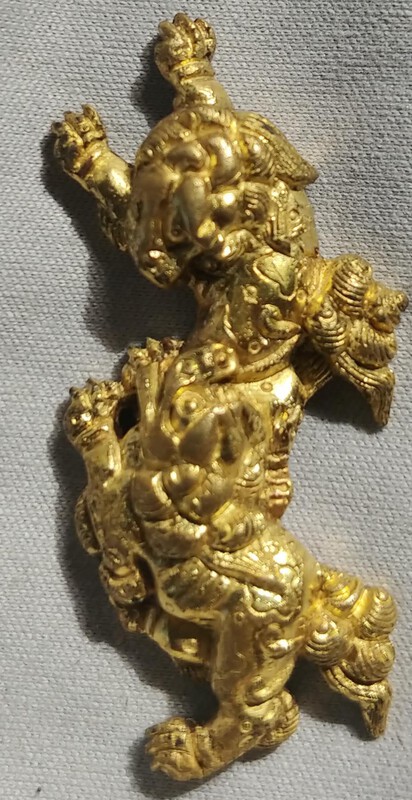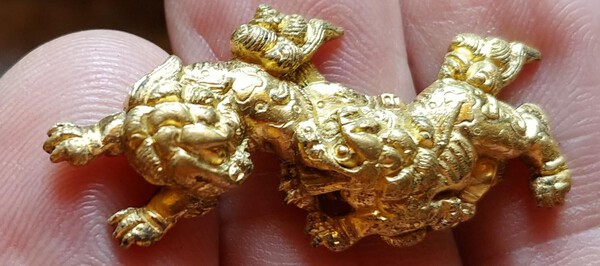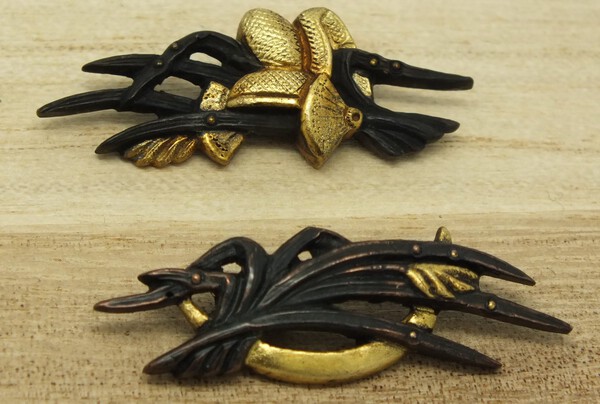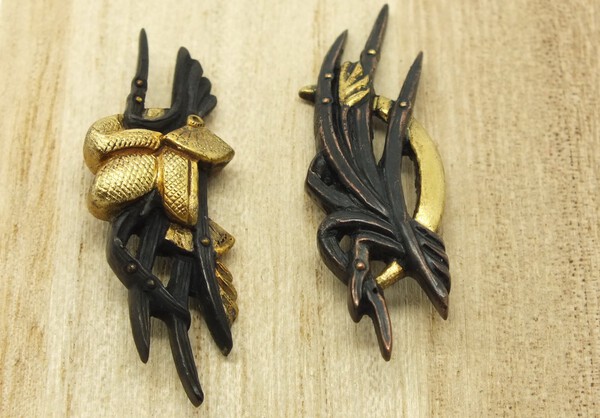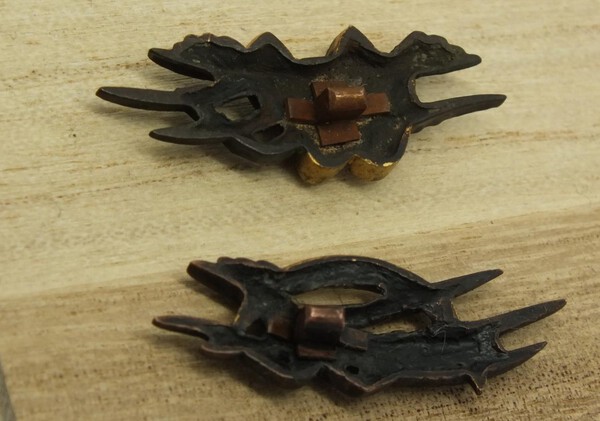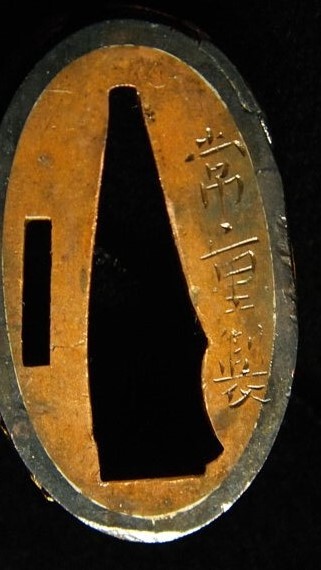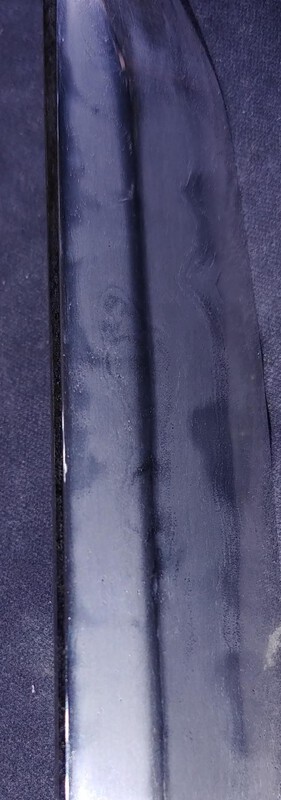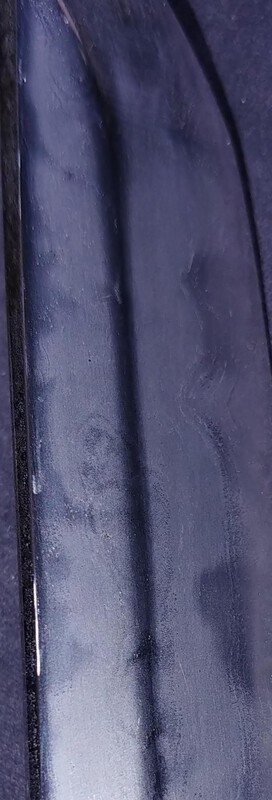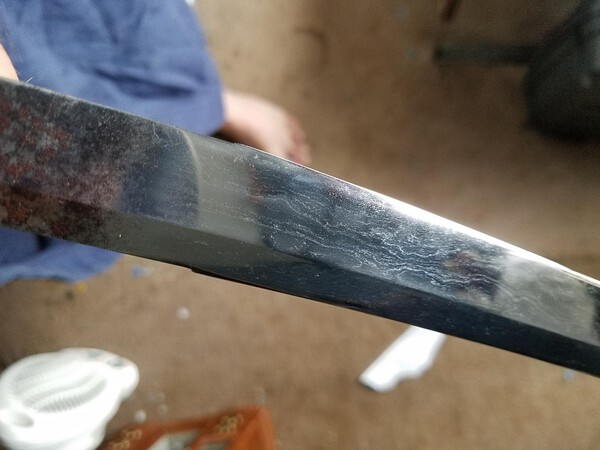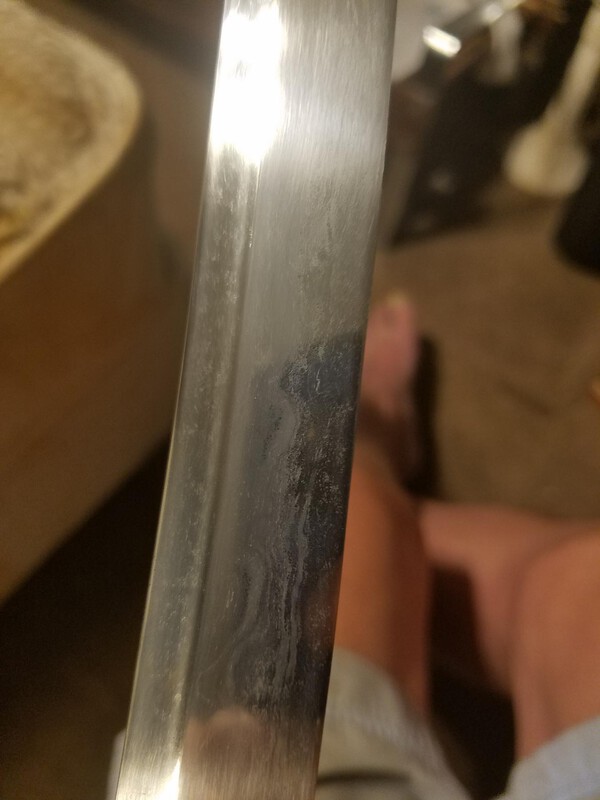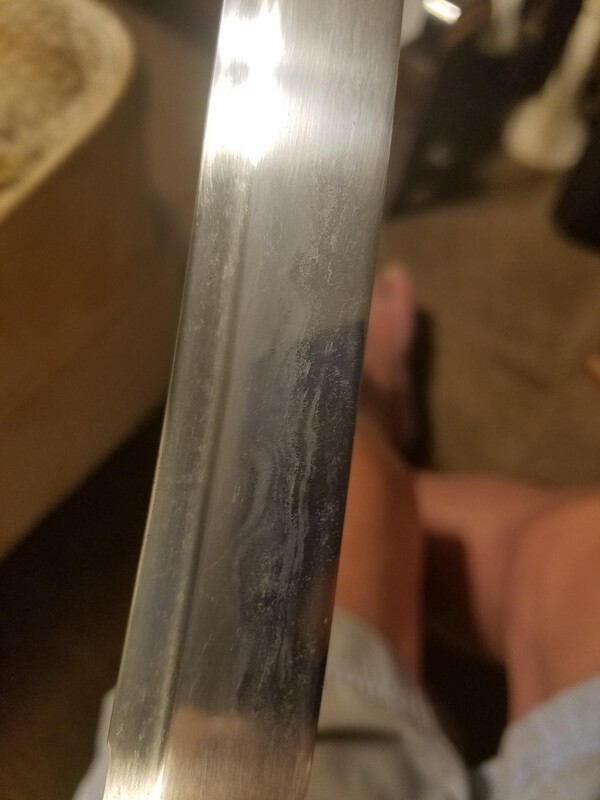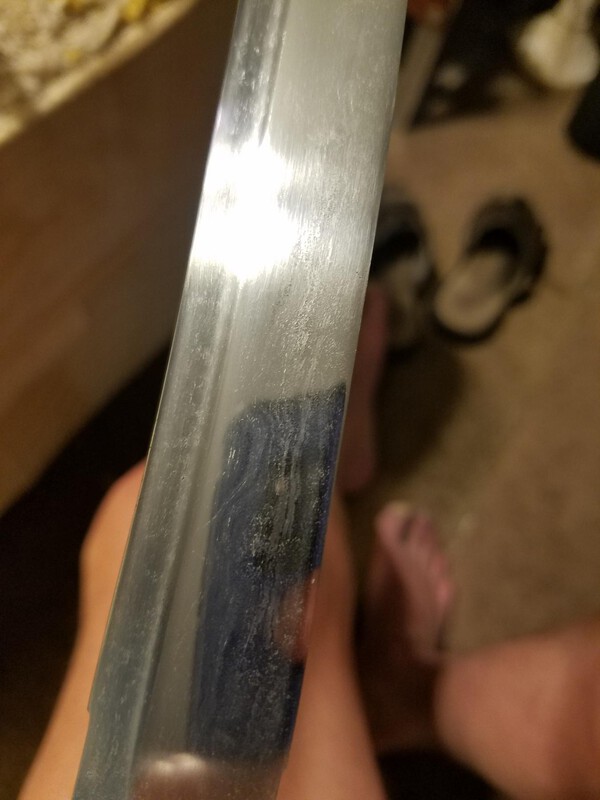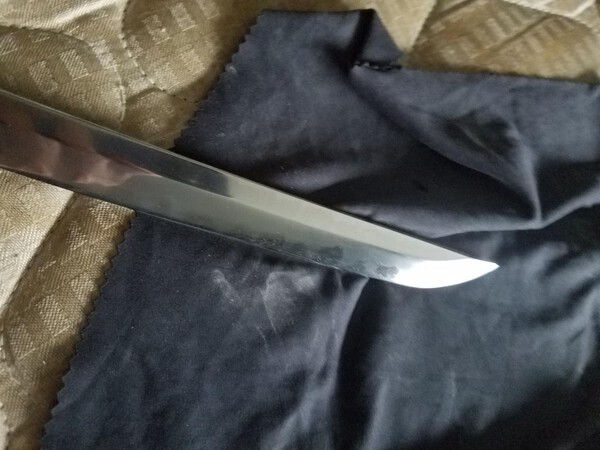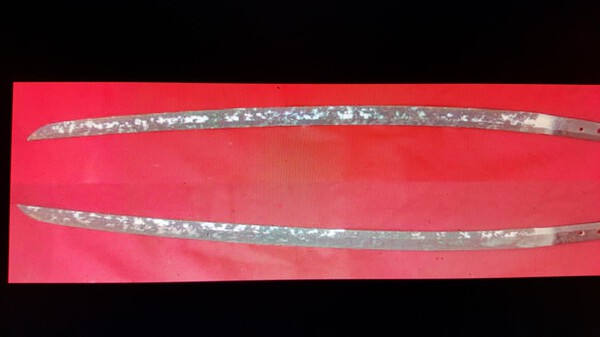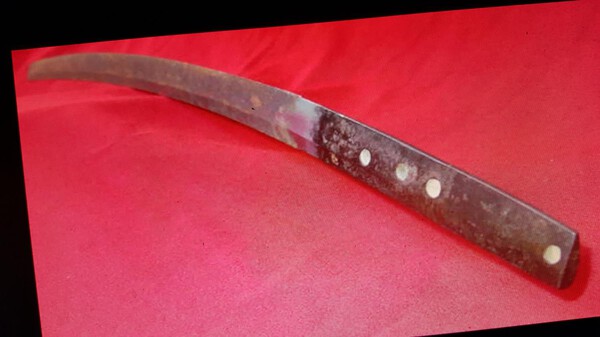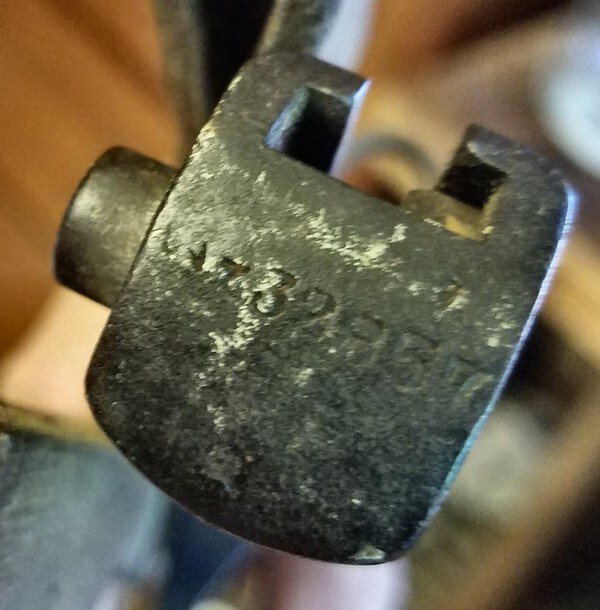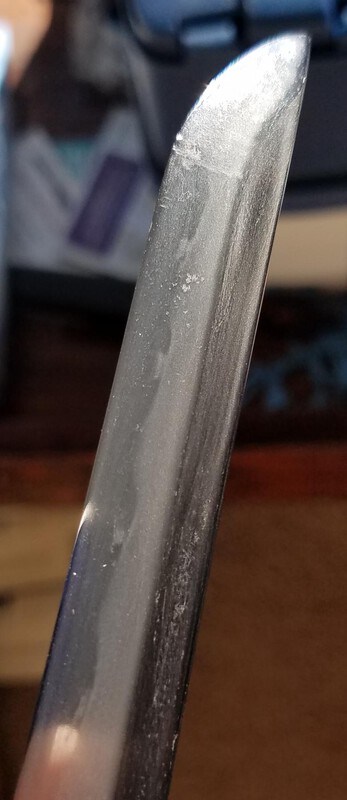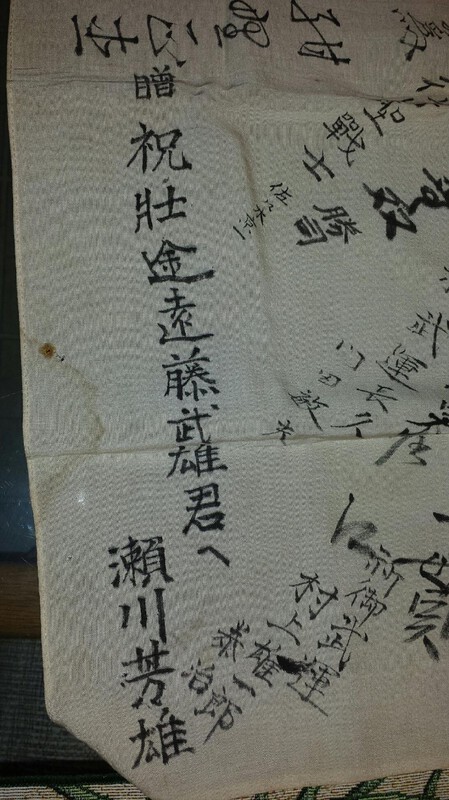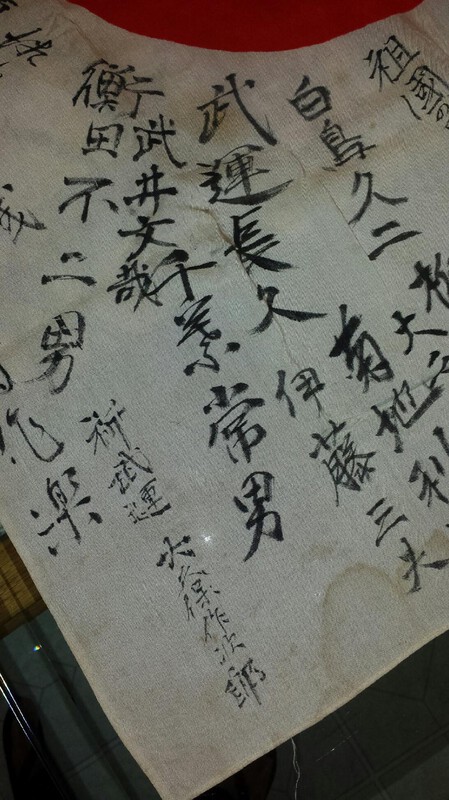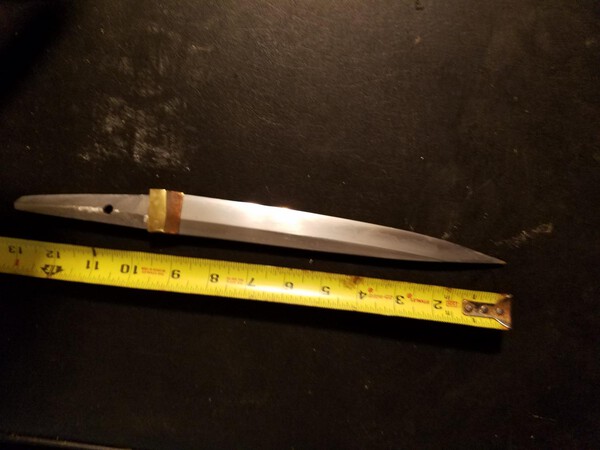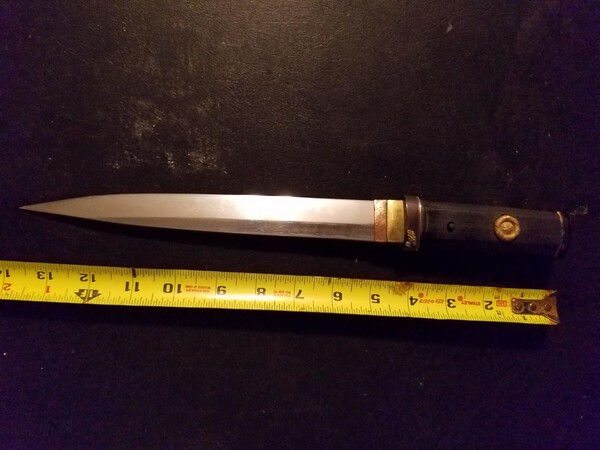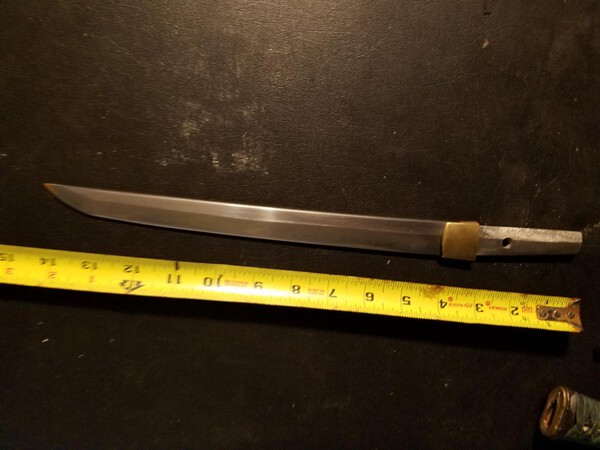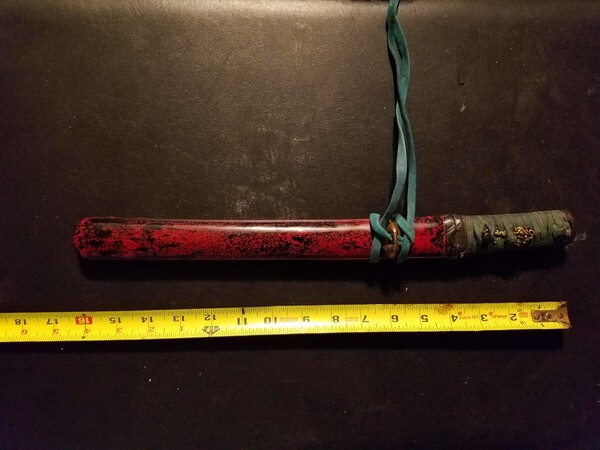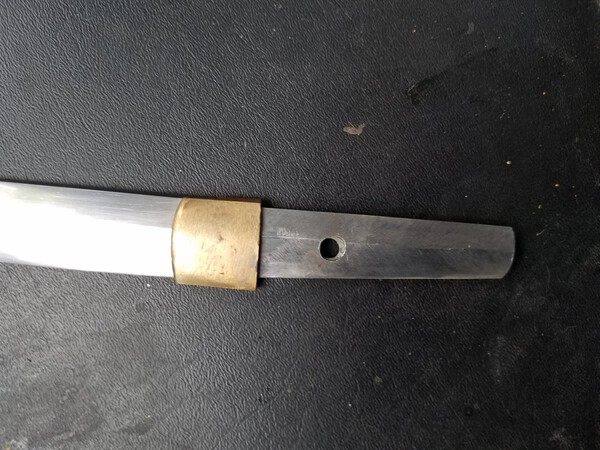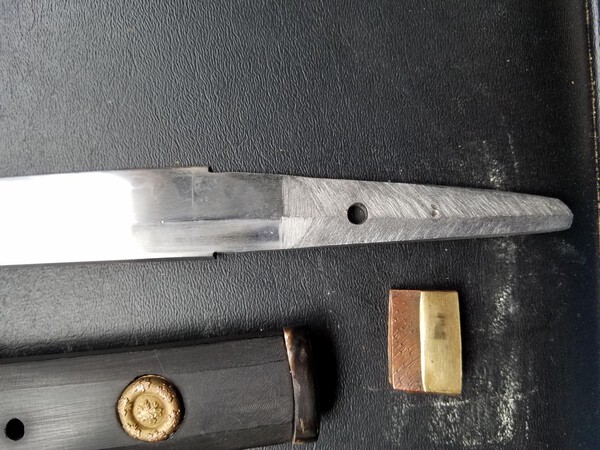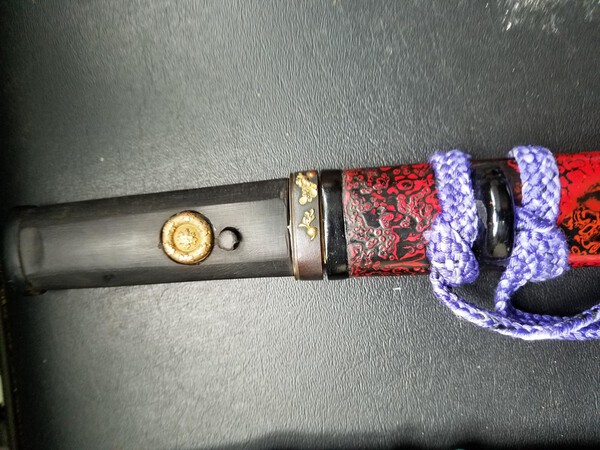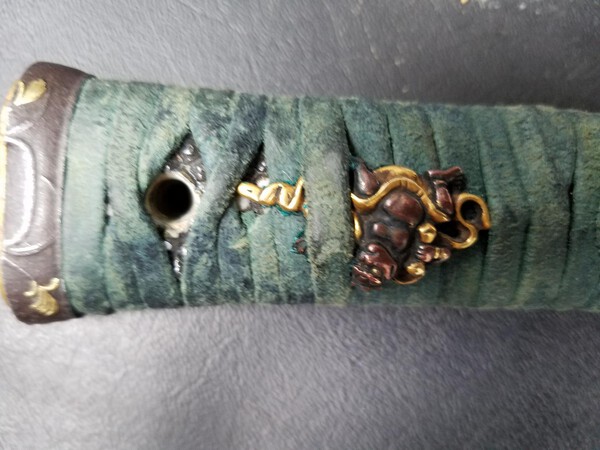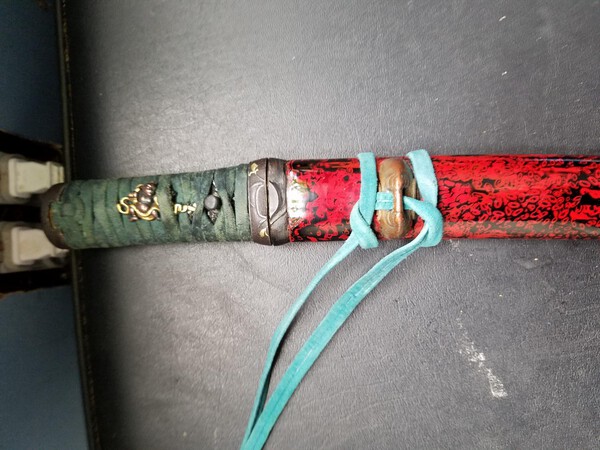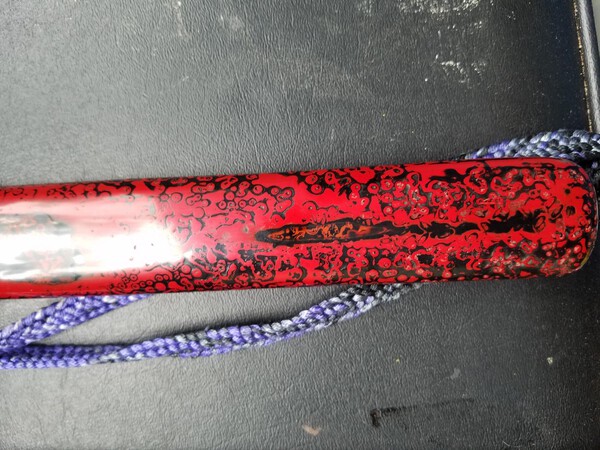
jct3602
Members-
Posts
170 -
Joined
-
Last visited
Content Type
Profiles
Forums
Events
Store
Downloads
Gallery
Everything posted by jct3602
-
Hello: Could someone help me with the translation on this mei? Just purchased it, and will receive it shortly; if the seller's pictures are not clear enough, I will repost when I can photo it myself. Yours, John Twineham
-
Hi All: Some questions about a poor condition but interesting tsuba. !. What is the creature in the cutouts? Is it a tortoise? 2. Appears to have the incisions for nunome zogan. Was that to help shakudo to adhere, or was there something else that is now completely vanished? Any thoughts would be appreciated. Yours, john twineham
-
Hi all: To busy choosing pictures to realize the spellchecker wanted to spell its own way, lol. Between that and my bad typing... Sorry Yours, john
-
Hi all: Have never a fuchu with copper insert and seppa before. Appreciate any thoughts. yours, john
-
HI Ford; Thank you for the heads up; was a very tiny outlay, so not a huge disappointment. Am going to the San Francisco Token Kai next week, so will ask my friend Blaine Navroth about it along with other pieces. Only have had one person see it up close with a loupe, and he is a sword maker (Michael Bell), not a furniture specialist. He had some experience with furniture while apprenticing in sword making with Nakajima, but that was many years ago, and dealt more with making habaki and tsuba then menuki. Yours, john
-
-
Hi all Nice but not the best; all gold; not foil or plated. Just the one, would appreciate thoughts if someone notices some distinctive detail. Yours, john
-
Hi George: Followed the link. Thank you; I may bid just to get a matched daisho set, if it does not get too expensive. Yours, john
-
George, thank you very much! I was thinking the motif was rice sheaves (symbol of prosperity?), just harvested on one, and then turned into abundant gold on the other. I will enjoy looking up the tale of Fujiwara no Yasumasa. Always wish I had stayed in contact with a friend who I shared a house with for 3 years about 45 years ago; he finished up with bachelors in French, masters in Russian, and doctorates in Chinese and Japanese, with his specialty being Heian (pretty much a study of the individual writing of a couple sources). Would have helped a lot in translating any kind of mei (he was rather obsessive). Yours/ john
-
Just got a nice pair of menuki for I think an excellent price. Wondering if someone had thoughts on their origin? Yours, john twineham
-
Thank you very much, John Aoi art has a Tsuneshige fuchi kashira for sale and the signature on the fuchi looks identical in respect to chisel strokes, etc. Art work on fuchi exactly the same in style, etc, though the Aoi art piece is not as big. Thanks to you, only one more character to figure out. Yours, john
-
-
-
Any thoughts on kuni would be appreciated. Hada seems very rustic, mountainous portion of northern 3rd of Honshu is my guess, but some opinions are southern Kyushu. The slightly darker vertical bands run between the top of the hamon and the more prominent muneyaki; seems to be some form of partial hardening, also occurs uniformly with all significant muneyaki on the ura side, occurs less often on the omote. Original file size was 1.98MB, but with compression to 180KB am not sure if enough detail comes through. If not, my apologies in advance for wasting your time. yours, john twineham
-
Jean, I agree about the kissaki; the proportions are wrong, and the yokote had vanished long ago and needs to be reestablished. In fact, the iori mune in the last 2 cm would indicate rework, I think, unless that is a normal finish for a marumune.. The cleaning is certainly a work in progress; it is in an early intermediate stage, so this is not any sort of finish polish. I have a friend whom I show it to regularly who apprenticed in polishing to a honami trained polisher before he started forging swords (Michael Bell), to make sure I am not damaging the blade, and he has been very pleased (I bought it for cleaning practice for very little; probably did 500 hours of slow work before it turned out to be more than that, and that was probably 500 hours ago). The lighting for the photos was not very good, and it was a cellphone. I believe the machi-okuri was done very poorly; the filing and machi are poor. Also, the remaining portion of the mei below the machi-okuri leads me to think it was gimei to begin with. The surface when i purchased it was almost all rust (good old black rust, not the reddish hue in the sale picture) with a layer of oil that had hardened into lacquer. Embedded in that lacquer were wood fibres, I think from a shirasaya that had disintegrated. The seller could not tell me anything about it. Anyway, I would appreciate thoughts about it. I thought perhaps it was showing enough that I could get some feedback. john twineham
-
Trying to get thoughts on a piece that has puzzled me for years. Any help would be appreciated. Since there are so many things going on, will include a picture of the omote (tachi-mei), and the formations near the machi on that side and near the kissaki, then more if desired. Appears to be machi-okuri about 6 cm with a gimei signature, so may at some time have been even longer. Present nagasa is 56.7cm. Marumune except for 2cm at the tip, that perhaps a result of kissaki reshaping for repair? Mune is completely hardened with extensive muneyaki. The omote appears to be Mino with a lot of Soshu; the ura more complicated (think Dorian Gray in League of Extraordinary Gentlemen). Hope these cell phone pictures do not compress to an extent that makes them of little value. Also two pictures of it from the advertisement for purchase in early 2005; piece looked less rusted in picture than it actually was; bought it for polishing practice and was surprised (these two were photos of my computer screen from an old computer that no longer could contact outside electronic world). john twineham
-
Hi Brandon: One of the units that my father's regiment fought against in New Guinea (lone tree hill battle) was, i believe, a Naval guard unit. Thanks for the reference. john
-
Just unearthed from family storage. Father was in 158th regimental combat team, New Guinea, Numefoor Island, Philippines, Japan. Bayonet had National Denki under Kokura supervision markings, serial number with either 2 or 3 characters followed by 32857. Only thing of possible interest is leather scabbard, with leather covering a wooden holder instead of metal. Also has two leather loops to hold on a belt. Any assistance and/or comments always appreciated. john twineham
-
Have what i think is a gimei boy's sword, but wonder if the hamon is close to that of the fake? signature's school (Tanba no kami Yoshimichi). All opinions appreciated. Hope the 20-1 compression ratio leaves clear enough images. john twineham
-
-
Here are a couple of pictures with shapes; seems to be a little moisture accumulating in end of both sayas causing some red rust; will eliminate that shortly. john twineham
-
-
The base of the original blade was koshisori, and had large hardened formations, so the satsuma-age was tapered down into a hardened formation so it would have the requisite hardened tip. Ended up looking like a yoroi-doshi in shape and relative thickness of the mune. john twineham
-
2 tanto made out of a blade that was snapped in the middle (broken past the shinogi, then someone attempted to hammer it back together). They probably thought they could cut a tree down or something akin to that. A great deal of the furniture was made by the gentleman who cut the blade down (the o-suriage and the satsuma-age), also the laquering and the tsuka. The menuki, one kurikata, and one fuchi were from collections; habaki, tsuka, etc. were all made. Took almost 8 years, but was worth it. Yours, john twineham

